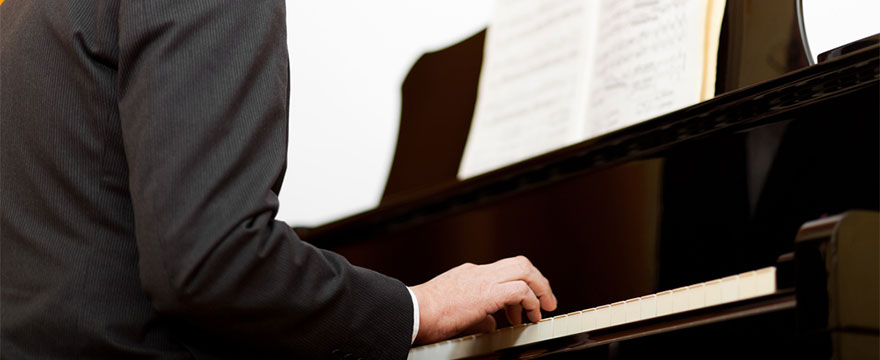If you’ve ever glanced under the keys of a piano, then you may have noticed two or even three pedals underneath the keys, which are operated using your foot (or feet). The most commonly used pedal is the sustain pedal, which is on the far right. This is called the sustain pedal (or damper) as it literally sustains the notes, and makes them sound for longer without you having to hold your finger on the key.
The piano is made up of strings, very much like a guitar. However, for each key there can be 2-3 strings depending on the piano. So that’s a lot of strings bearing in mind we have 88 notes. But how the piano makes its sound is by hammers hitting the strings. A guitar would typically have its strings plucked to make the sound, but the piano uses hammers to hit the strings. You can see from the picture below that there are a set of strings for each note, along with a hammer for each note as well.

Every single note (or string) of a piano also has a damper (see below). These dampers constantly sit on the strings, and lift off when you hit a note. The damper has to lift away from the strings when you hit the note, otherwise there would be no sound (or very little). Once you lift your finger off the note, then the damper will instantly sit back onto the strings and cut off the sound. Without the damper returning to the strings, then the note would continue to play until it fades out.

And this is where the sustain pedal comes in! If you want the note to carry on sounding even though you lift your finger off of the key, then you press the sustain pedal (before you play the note, or during). What this does is lift all of the dampers away from the strings, which then allows the sound to continue – until you either take your foot off the pedal to put the dampers back on the strings, or allow the sound to fade out.
What is the sustain pedal used for exactly, and why is it important?
The sustain pedal allows the notes to be connected smoothly, and enables the sound to carry over from note to note. For example, listen to this audio below of an arpeggio being played without the sustain pedal –
And here’s how it sounds with the sustain pedal pressed –
You can instantly tell the difference! One final thing to mention is the way the strings interact with each other when the sustain pedal is pressed. The strings will vibrate sympathetically, which basically means that the vibration from one string is passed to another, which will greatly enrich the tone and resonance of the sound.
Learn to play piano blues online with me
My online blues course teaches blues piano from scratch and builds your ability in a modular way. As you progress through the course, you’ll learn left hands, right hands, bridges and endings which you’ll use together to make your own blues piano compositions. I’ll show you the blues scale early on, giving you everything you need to start improvising – and we’ll progress to advanced licks and an impressive tutorial song to consolidate your new skills. Finally, we’ll move onto some popular blues songs, including music by the great Jerry Lee Lewis and my own personal favourite, Ray Charles.
I charge just £19.99 for 6 full months access, with 58 videos and counting – that’s less than the cost of a single piano lesson! – and I offer a 100% satisfaction money back guarantee.

Leave a Reply